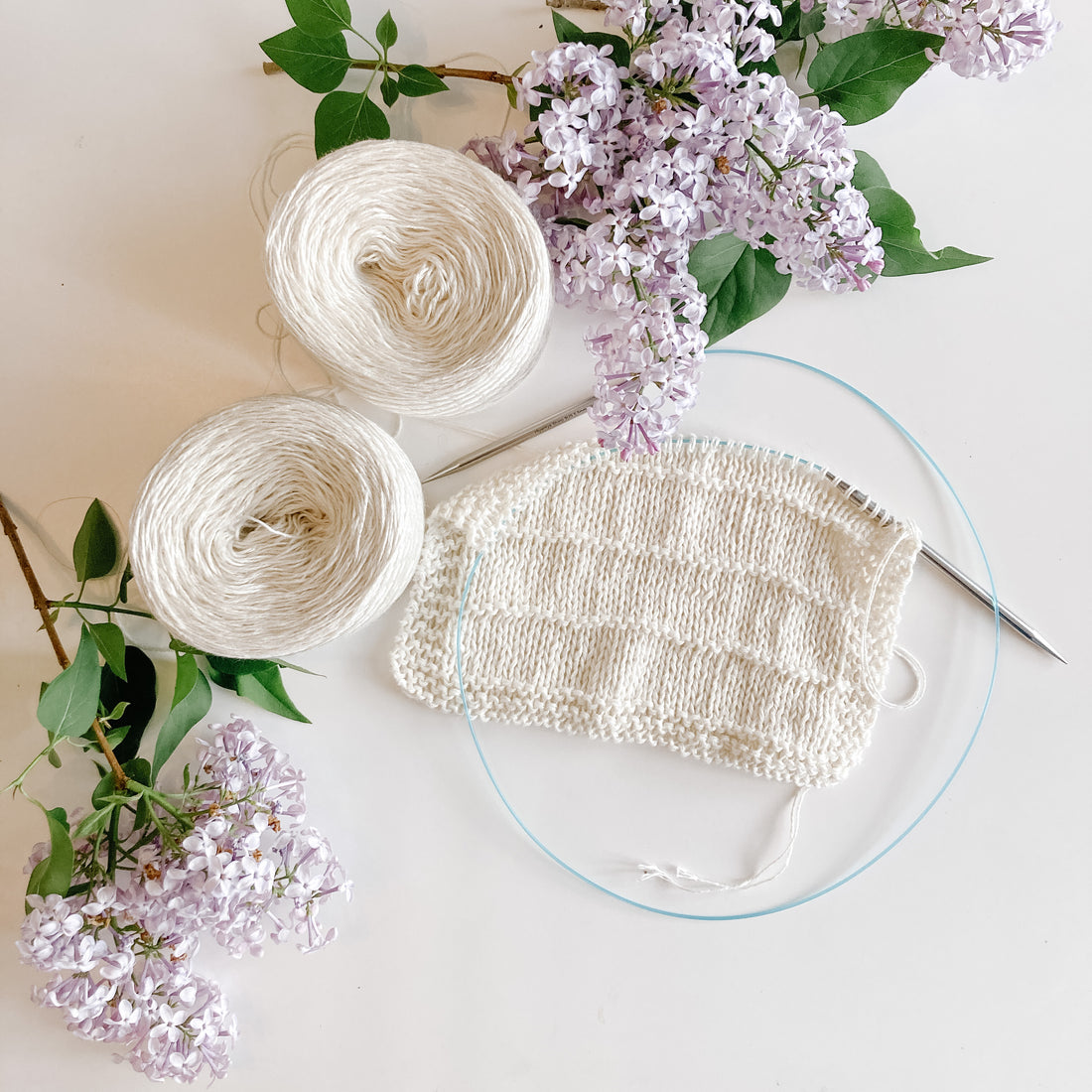
Knitting is a craft that brings warmth, creativity, and beauty to our lives. Whether you're a seasoned knitter or a newbie with a set of needles and a skein of yarn, you've likely heard the term "gauge" mentioned in knitting patterns. In this blog post, we'll explore what gauge is, why it's crucial in knitting, its impacts on your projects, and how to adjust it to achieve the desired results.
What is Gauge in Knitting?
In knitting, gauge refers to the number of stitches and rows in a specified measurement area, usually a 4-inch by 4-inch square. It is expressed as a ratio, such as "20 stitches and 24 rows equal 4 inches in stockinette stitch." Achieving the correct gauge is essential because it determines the size and fit of your finished project, whether it's a cozy sweater, a delicate lace shawl, or a snug pair of socks.
Why is Gauge So Important?
Sizing and Fit: If your gauge doesn't match the pattern's gauge, your finished item may end up too large or too small. A sweater with an incorrect gauge could become an unwearable disaster, while a hat or pair of socks might not fit your head or feet.
Yarn Usage: Incorrect gauge can lead to yarn shortages or excess. Achieving the correct gauge ensures you have just the right amount of yarn to complete your project as intended.
Stitch Patterns: Gauge affects the overall appearance of your project. Pattern stitch details and motifs can become distorted if the gauge is off, potentially diminishing the beauty of your work.
Pattern Structure: Many knitting patterns depend on specific stitch counts and row repetitions. A mismatched gauge can disrupt the pattern structure and make it challenging to follow the instructions.
The Impacts of Gauge Errors
When you ignore or miscalculate gauge, your knitting project can be affected in various ways:
Too Tight Gauge: Using smaller needles or knitting too tightly results in a denser fabric. This can make your project smaller and stiffer than intended.
Too Loose Gauge: Conversely, using larger needles or knitting too loosely results in a more open and larger fabric, which may not provide the warmth or structure you desire.
Uneven Gauge: An inconsistent gauge can create an irregular texture, making your project look unprofessional and unfinished.
How to Adjust Your Gauge
Achieving the correct gauge starts with selecting the right yarn and needles for your project. If your gauge doesn't match the pattern's specifications, here are some steps to adjust it:
Change Needle Size: If your gauge is too tight, switch to larger needles; if it's too loose, switch to smaller needles. Make a gauge swatch, and keep adjusting until you reach the desired measurements.
Tension Control: Pay attention to your knitting tension. Practice consistent tension throughout your project by consciously controlling the tightness of your stitches.
Practice Swatching: Always make a gauge swatch using the stitch pattern specified in the pattern. Block the swatch as you would the finished project to ensure accurate measurements.
Alter Yarn Weight: If changing needle size doesn't help, you can also try using a different yarn weight or even double-stranding to reach the correct gauge.
Be Patient: Adjusting your gauge can be time-consuming, but it's worth the effort. Remember, gauge swatches are your best friends in knitting, helping you avoid disappointments later in your project.
In the world of knitting, gauge is your compass, guiding you to a successful, well-fitted project. Understanding its importance and learning how to adjust it is a valuable skill for any knitter. So next time you pick up your needles and yarn, don't forget to swatch and check your gauge – it's the key to creating beautiful, well-fitting hand-knit items.
Happy knitting!
Ashley

1 comment
It’s so true. Gauge is important. I’m always excited to cast on but take the time to check the gauge.